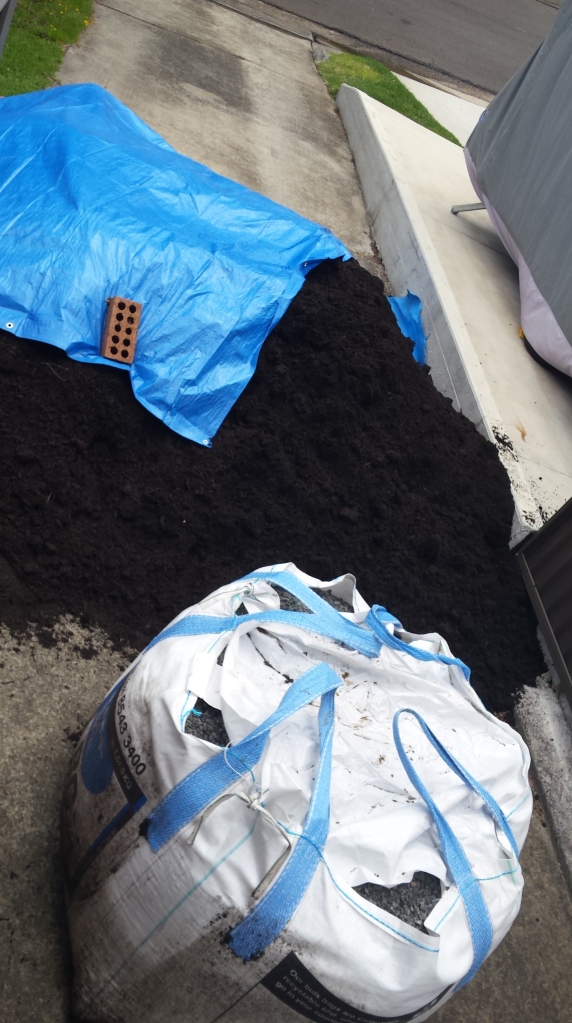Buying certified organic produce is expensive. I have heard that many farmers just can’t justify the cost of certification yet still offer organic produce… you just have to head to a farmers market and talk with the farmer. But what if, like us, there is no farmers market within a reasonable distance from you? You can join a co-op, but for the most part you don’t get to pick and choose what items you get each week. This is a problem for us. With two young kids (one of whom is of the super picky eater variety) and a super busy lifestyle I need to be able to plan meals in advance to make sure the picky eater gets at least a few things on his plate that he will eat and each evenings meal prep time fits with the amount of time I have to get said meal on the table. The answer for us was to grow our own food.
We’ve previously dabbled in a little home vegetable gardening but now that we’ve decided to ramp up our efforts we thought it best to designate an area of the yard just for food production and install some purpose built garden beds.
First up we used the Suncalc.net to check out which sections of our yard receive direct sunlight throughout the day and throughout the year (on a side note this also prompted us to move the clothesline to maximise air drying time in winter). We then took this information and used landscaping software to ‘design’ our yard. We segmented the yard into zones, most importantly the play/entertainment zone (these are combined so we can supervise kiddos whilst entertaining) and the work zone (vegetable patch, chickens and clothes line).
It is the later zone we are working on first and at the moment it is very much a work in progress. We already had the chicken coop (fondly referred to as The Hilton) and three chickens but our existing garden beds were problematic. To begin with, our yard is on a sandstone shelf so the soil is very shallow. We’ve taken advantage of this to grow citrus trees (because they are shallow rooted) but we needed to build raised garden beds to create soil depth for our vegetables. Secondly, our soil is contaminated with all sorts of nasties. We found this out when we took soil samples and sent them off for testing as part of a Macquarie University project to map soil contamination (you can check it out here: https://research.science.mq.edu.au/vegesafe/). So our raised beds would need to be filled with organic soil brought on to the property, not existing soil.
Enter wicking beds:

Each one of these beds is lined with thick plastic to provide a barrier against the contaminated soil and weeds, there is a layer of blue metal that forms the water reservoir and a tube/pipe into the reservoir that allows us to fill it. This is then covered with geotextile fabric which soaks up the water in the reservoir into the layer of soil above cutting back the frequency of watering required. This is just a very basic description, there are so many designs for wicking beds to chose from, such as Gardening Australia’s version.
We now have seven of these babies and they provided us with around 70% of our vegetables over summer. We can do better and plan to build at least another two beds over winter to try to increase our growing capacity to 80-90%… but for now I need a break from shoveling and barrowing soil!

One tonne of blue metal and four tonnes of soil ready to be wheel barrowed from the front yard to the back and into the new wicking beds

After almost a week of shoveling soil at every opportunity the wicking beds are almost ready
